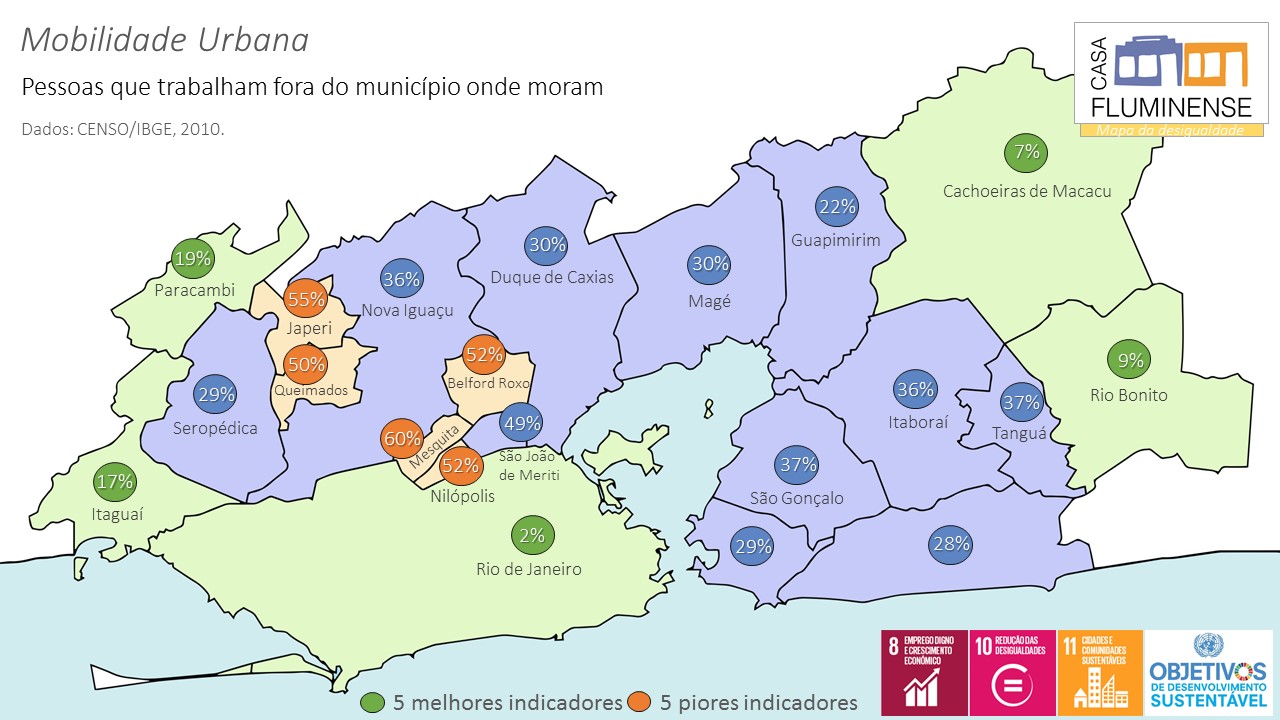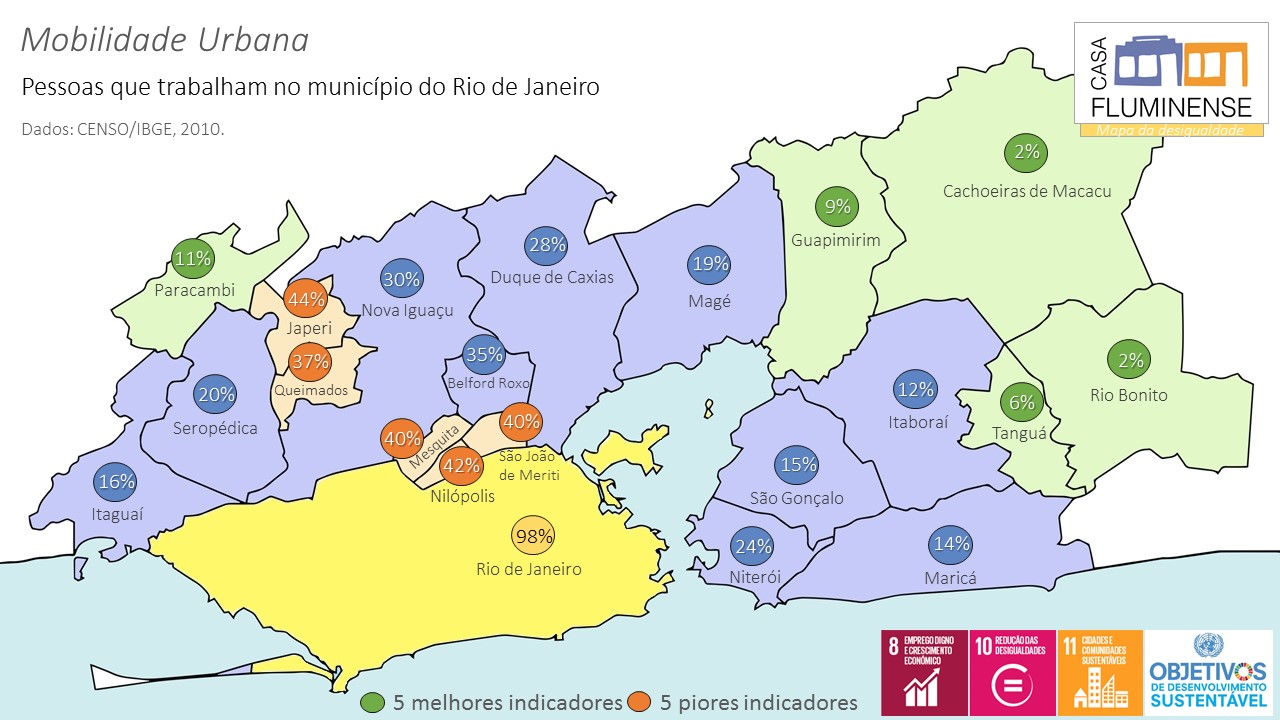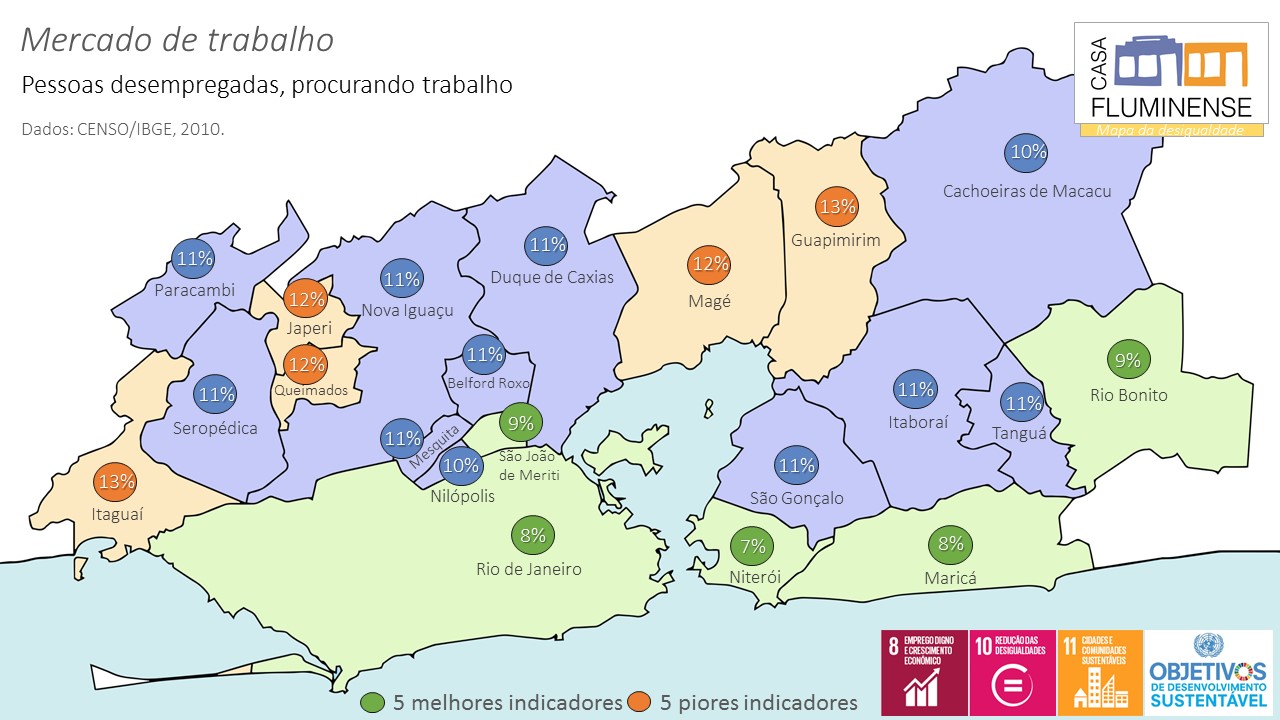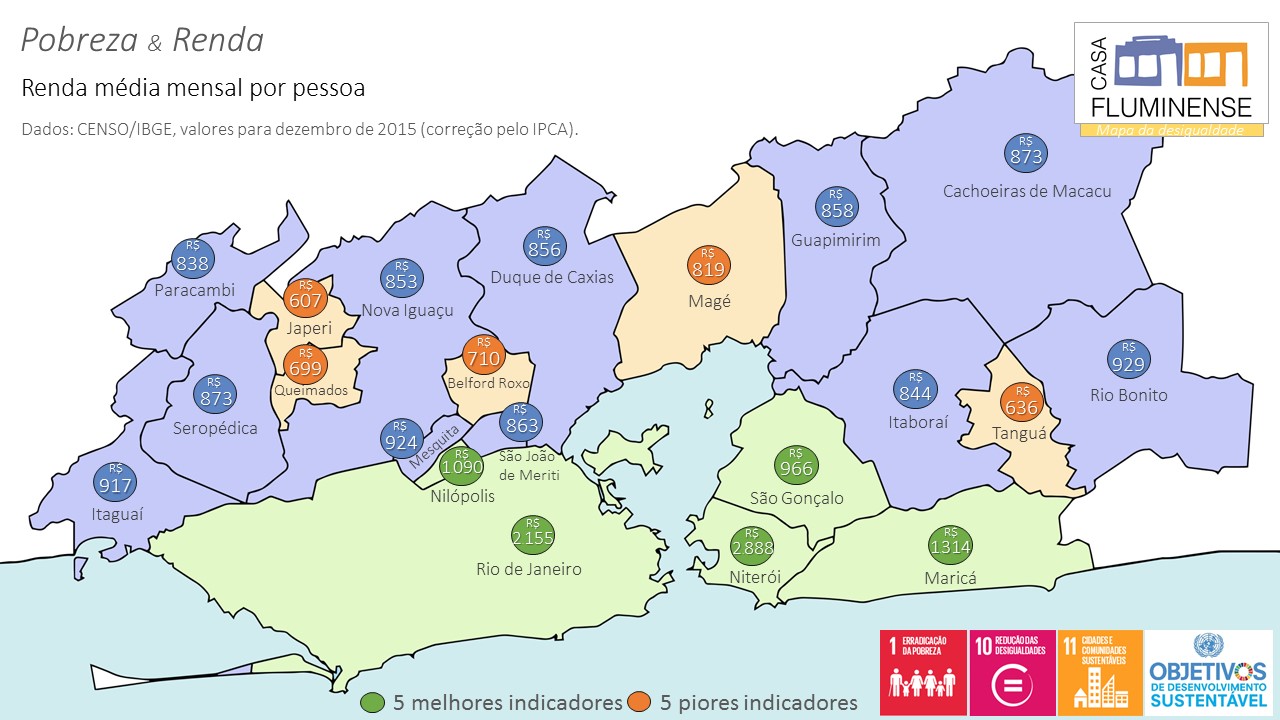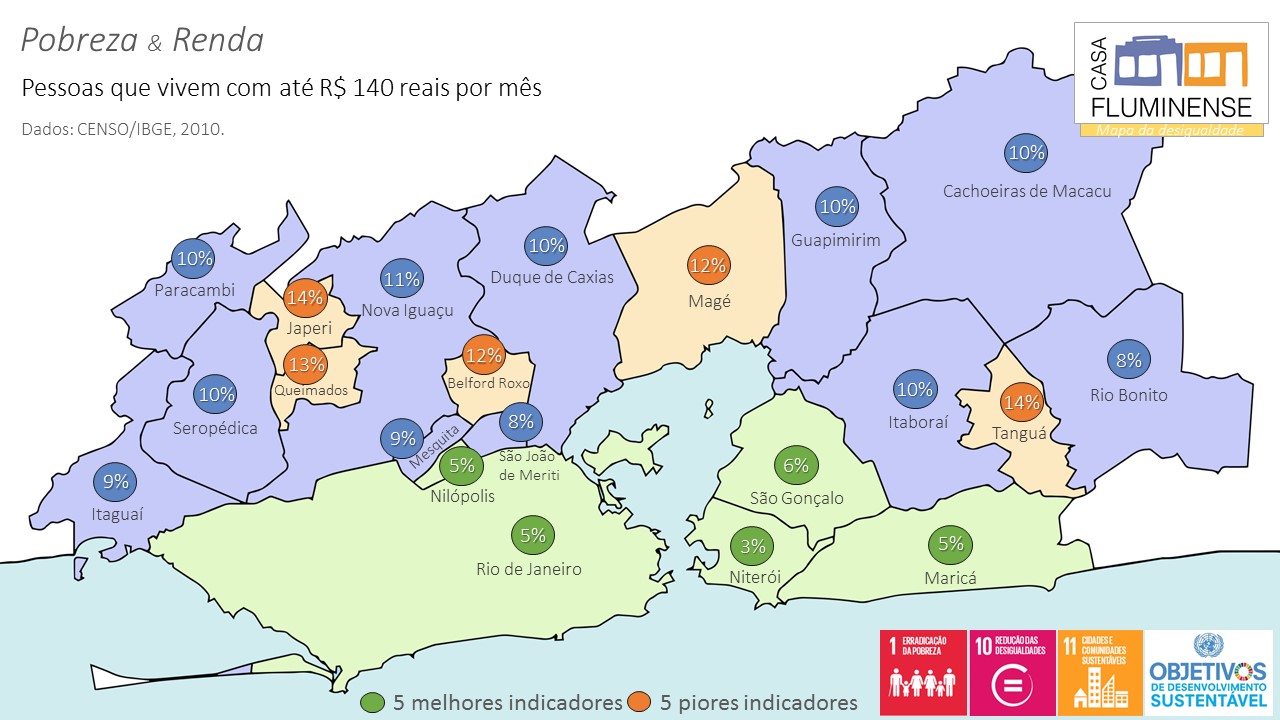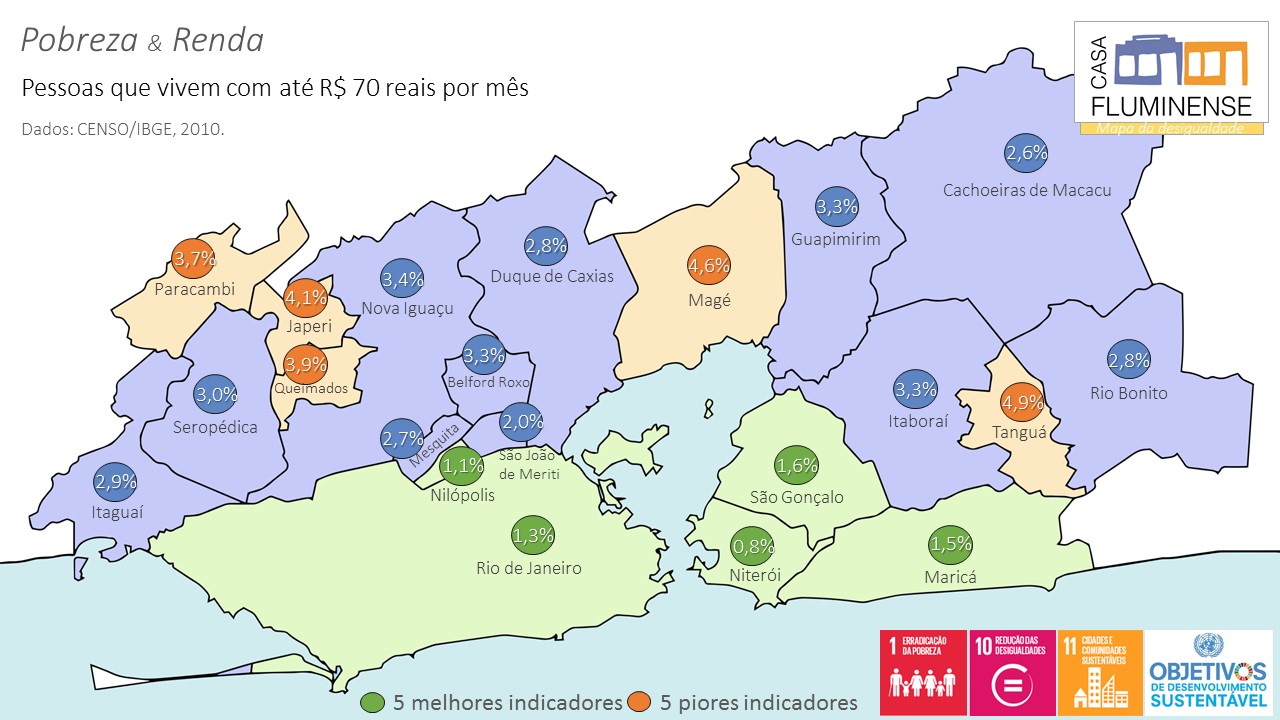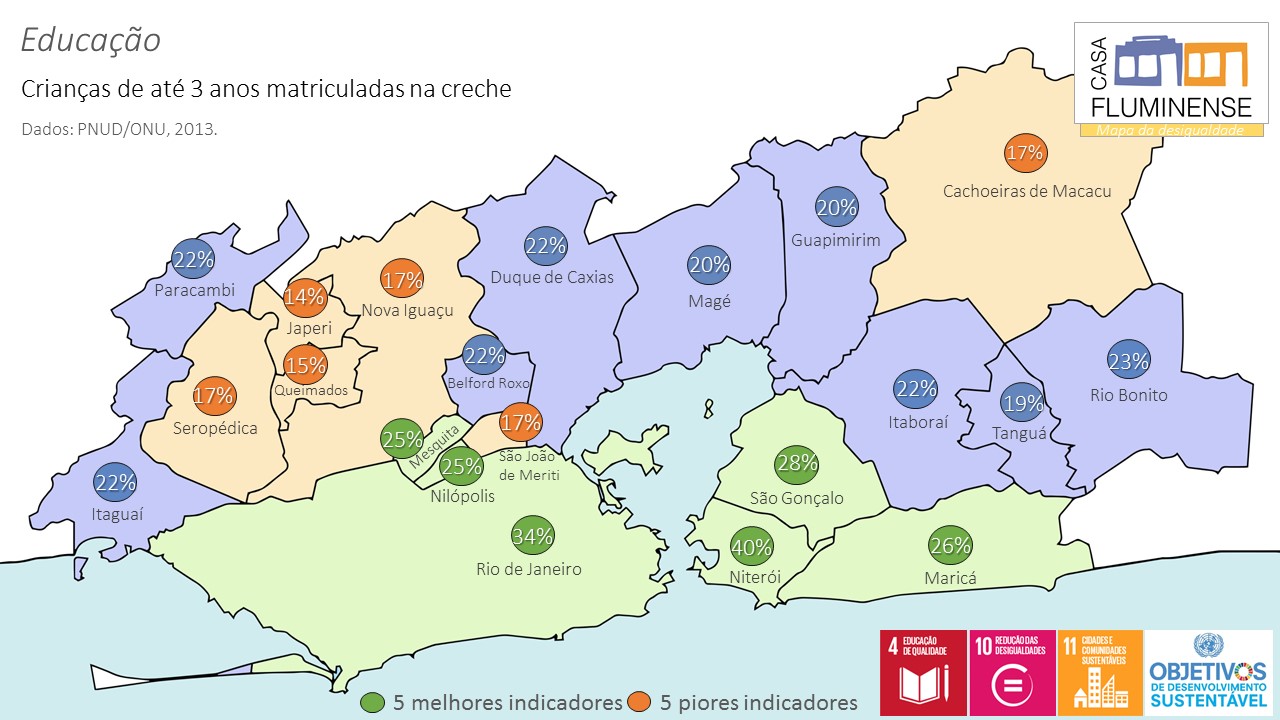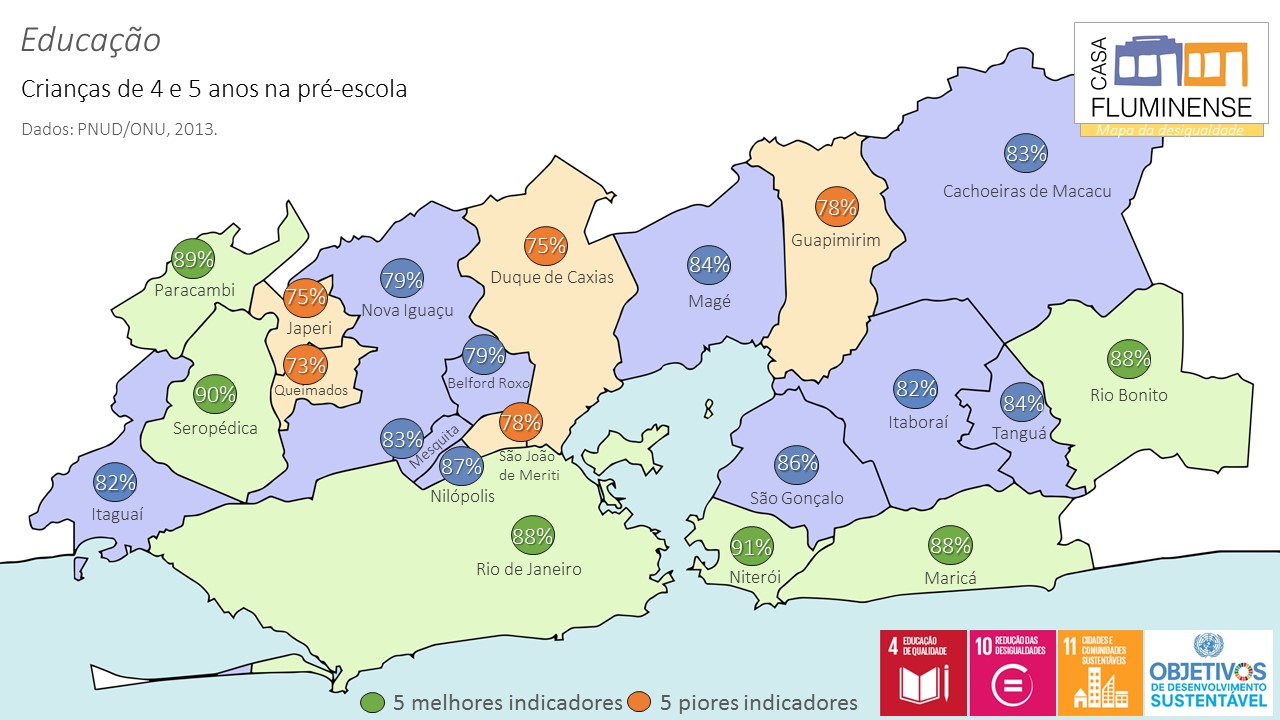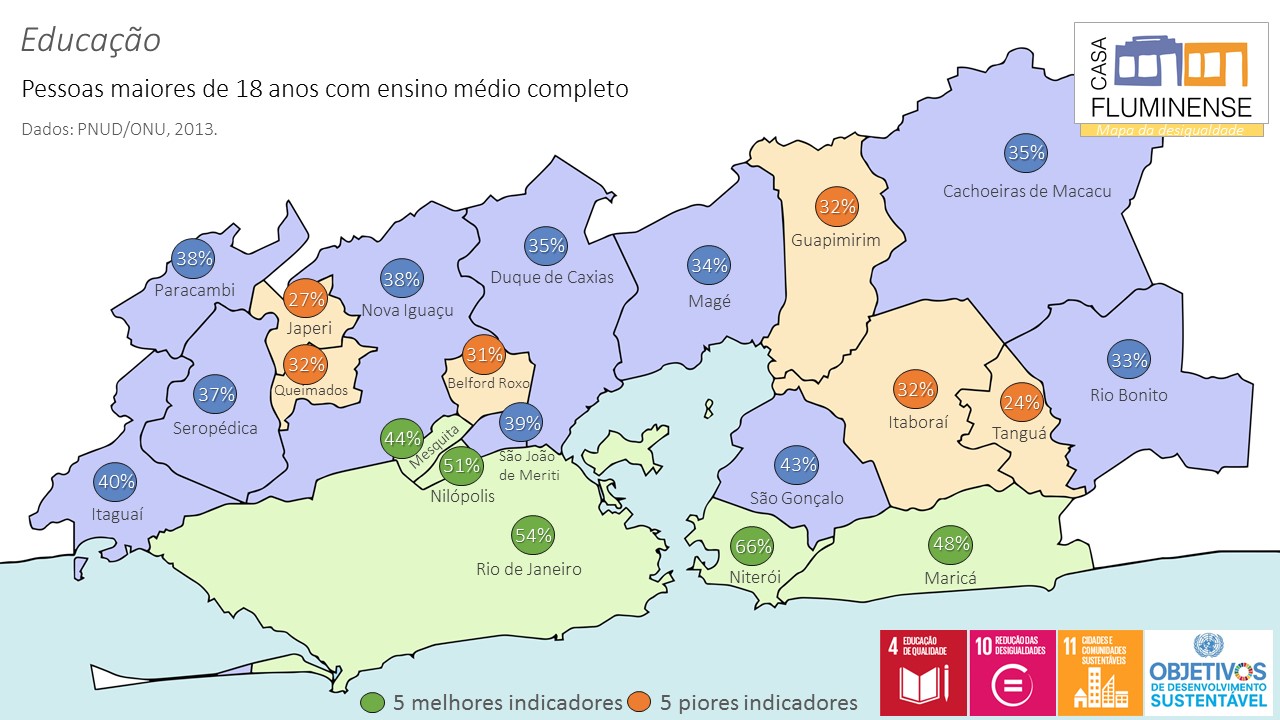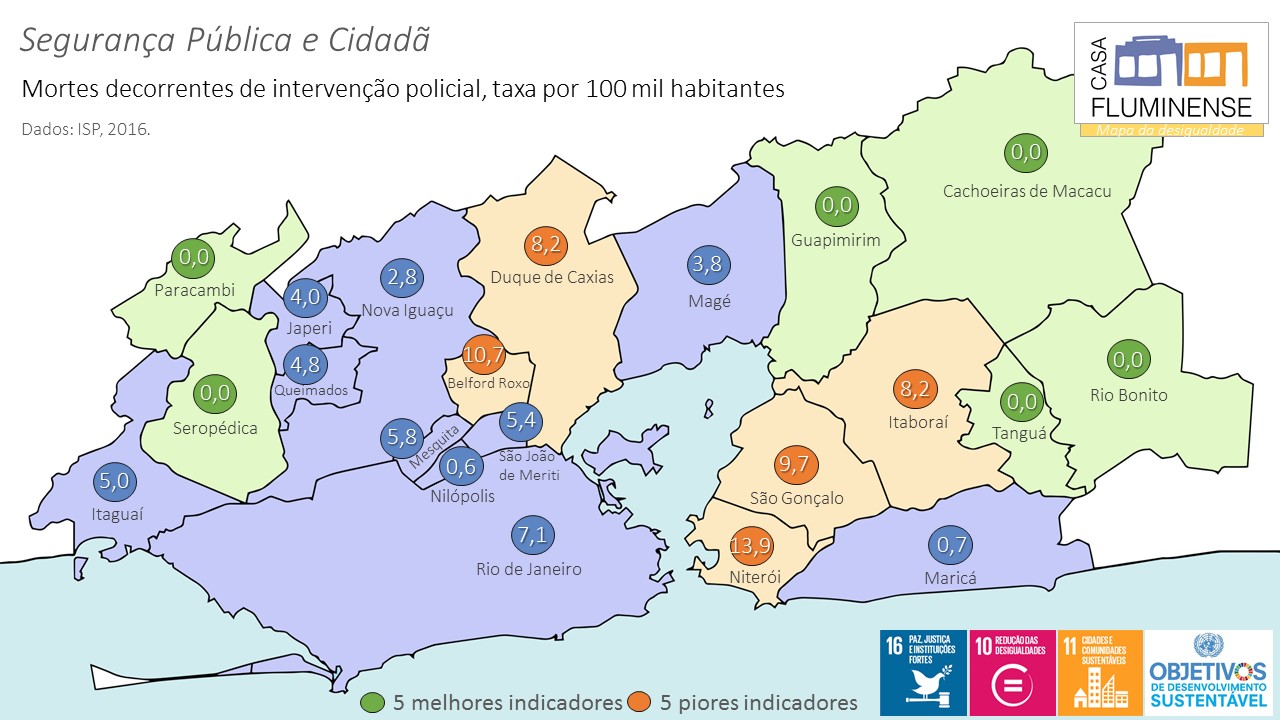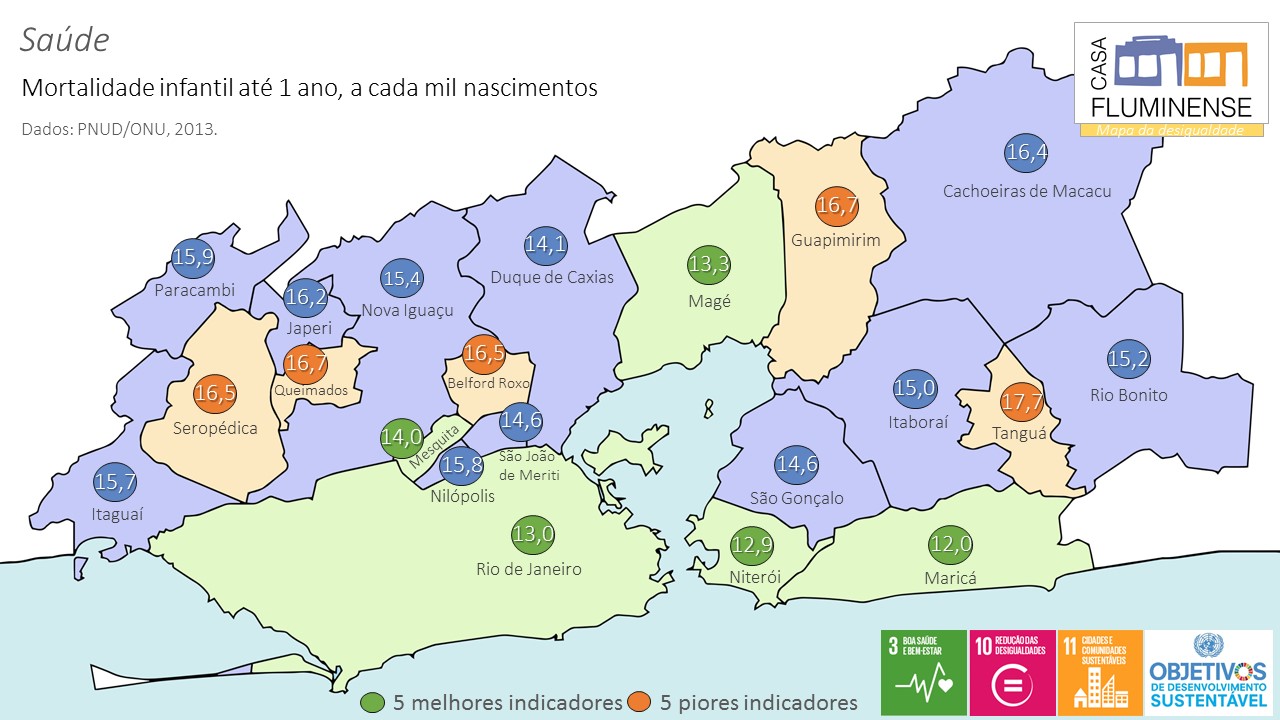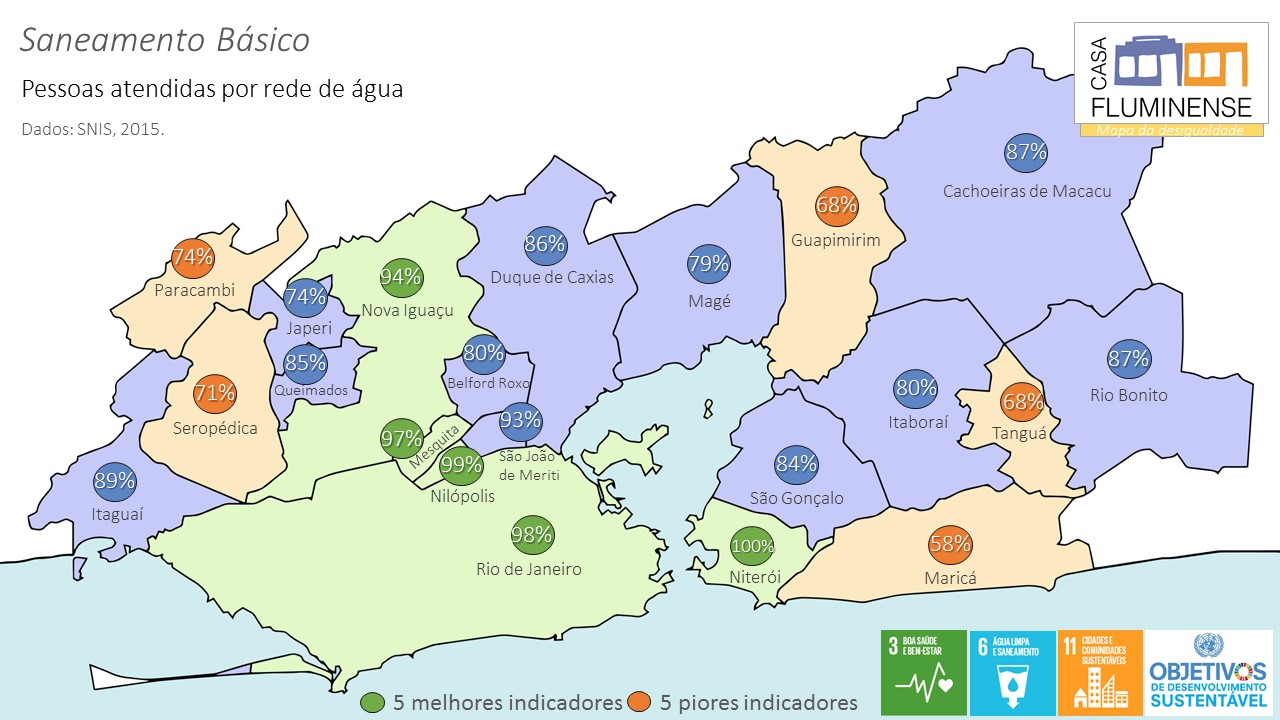The Inequality Map gathers 23 indicators on seven key themes related to the metropolitan reality of Rio de Janeiro: Mobility, Job Market, Poverty and Income, Education, Public and Citizen Safety, Health and Basic Sanitation. The data is updated according to the most recent publications of official sources.
The maps show the different patterns in the lives of the 12 million residents in the 21 municipalities that constitute the Metropolitan Region of Rio de Janeiro (RMRJ). One of the purposes of this exercise is to promote a metropolitan gaze towards transversal issues and to understand the situation of each citizen in this context.
With this, Casa seeks to fill a gap in terms of spreading public information. Expanding the reach of knowledge about these issues and making data and information reader-friendly helps to qualify public debates. Our goals are the deepening of democracy, the promotion of territorial equality, and sustainable development.
Make use of the maps!


